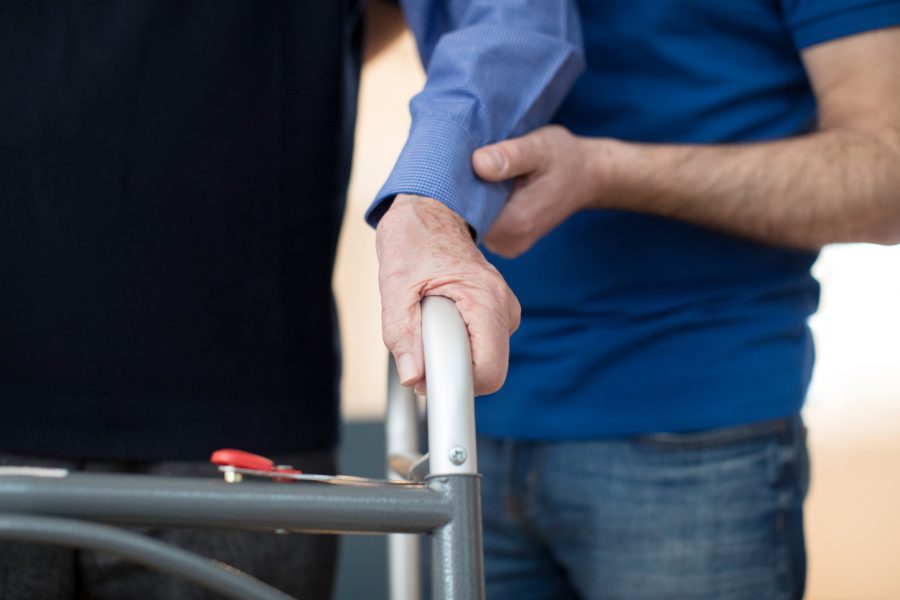The Toto Washlet toilet: at the press of a button, a jet of clean warm water sprays your nether regions; press another button and warm air dries them. The sleek bowl, a masterpiece of Japanese technology, can be fixed at the right height for your use, ensuring easy access. At around £3,000 this stylish, ultramodern feature will transform your bathroom routine – and your carer’s life.
Gone is the ignominy of wiping bottoms, gone the back-breaking hoisting of their charge onto the toilet. As their role is shorn of some of its more humbling aspects, the carer’s satisfaction improves, their status takes a giant leap forward, and they are free to spend more ‘quality time’ with their charge. If the government were to commit to buying these new-fangled toilets in bulk for even only 5 per cent of individuals looked after by working-age unpaid carers each year (about 175,000) they could drive down the price considerably, and potentially see some unpaid carers returning to at least part time work.
The NHS, too, would benefit from a social care system that runs smoothly
Toto is just one of many innovations the government has at its disposal to address our social care crisis. Why burden Baroness Casey with leading a royal commission or an independent government review that will feature lengthy perorations in endless meetings, when quick, concrete solutions could sort out this national emergency? Yet the government has reportedly reached an ‘impasse’ over social care – stalling any initiative that might tackle the issue.
Improving the care system would increase economic activity and improve NHS results. It would also be popular with voters: the government should learn from the Lib Dems’ surprising election wins that placing social care at the heart of their agenda won votes. 818,000 individuals are receiving adult social care support but twice as many have requested it – leaving too many to endure what the journalist Humphrey Hawksley calls ‘a broken system’.
The BBC foreign correspondent has spent years battling to secure appropriate accommodation for his 28 year old son Christopher, who has multiple complex needs. Hawksley tells me that ‘the government has been forcing people into social housing where they end up isolated without friends or peers. In disabled circles, it is called “warehousing”, and those stories are harrowing.’ Three months ago, finally, Christopher was accepted into a new supported living centre in Peterborough. He is flourishing – but it took his parents five long years to achieve this. Neither one could hold down a full-time job during this period.
Better support for carers would reduce economic inactivity significantly. Almost 400,000 workers in 2021-2022 were forced out of the job market to look after a spouse, a family member, or a dear friend that has been ill-served by services. This year, things could look worse: a poll the Centre for Social Justice carried out with Opinium found that 41 per cent of working-age carers are considering leaving their jobs by the end of this year for the same reason. With nearly 9 million economically inactive, the exodus from work due to care responsibilities could cost Treasury £6 billion in lost taxes and extra benefits payments.
The NHS, too, would benefit from a social care system that runs smoothly. Talk of ‘bed-blockers’ sounds rude but there aren’t many polite ways of describing hospital wards where fragile, elderly, disabled men and women lie in a row, waiting for someone to care for them at home – when the formal care sector has been hit by a tide of vacancies up by 52 per cent in 2021-22. Hospitals can’t discharge these patients because they would risk re-admission or a dangerous decline; but waiting lists grow longer as a result.
As the country grows older and more infirm, finding solutions to the care crisis grows more urgent. After a year’s research, the working group that steered my research at the CSJ came up with a few practical proposals: ten hours free domiciliary care (for the 10 per cent with most severe needs) would cost £4 billion – but providing home care has been shown to reduce demand on more expensive (on average £52,000 a year) residential care. The DWP could administer a home adaptations grant of £2,000 to 5 per cent of individuals looked after by working-age unpaid carers each year (this equates to around 175,000 grants per year). This would include handrails and stairlifts, and be cost neutral within 15 months.
Adopting digital technology encourages clinical home care, which, when delivered by trained healthcare staff including pharmacists and nurses, can improve patient outcomes while reducing pressures on hospitals. The same research also reported higher levels of patient satisfaction with ‘hospital at home’ care.
None of these concrete measures will overhaul our faltering system of social care on their own. Carers like Humphrey Hawksley will never be able to rely on a whizzy toilet or a telecamera as substitutes. But knowing that government is kicking this issue into the long grass will further frustrate them – and the recipients of their care.







Comments